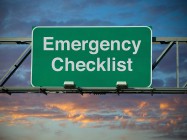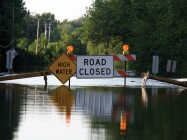When a hurricane or intense storm is over, you may be anxious to protect or clean up your damaged property. However, rushing to the task can cause bigger problems.
Hurricanes and Heavy Rains: Cleaning Up Damage
BEFORE YOU RETURN
Let public safety officials do their job. In the wake of a disaster, emergency personnel have the overwhelming task of helping the injured, providing safety and preventing further loss and injury.
- Keep the street clear and don’t enter damaged areas unless assistance has been requested. In your eagerness to help or clean up, you could get in the way of relief efforts or create another problem.
ASSESSING THE DAMAGE
Now is the time to be cautious. Many injuries occur in the aftermath of a severe storm.
- Don’t enter a damaged building. An unstable structure could collapse unexpectedly.
- Wear protective gear. Gloves, sturdy footwear, long pants and long sleeves can help protect your if you step on a nail or brush up against broken glass and sharp, metal edges.
- Be cautious about fire, electrocution or explosions. Shut off electrical power, natural gas and propane tanks. Don’t touch damaged power lines, gas lines, wiring or electrical systems. Report them to emergency responders and utility companies.
- Use battery-powered flashlights or lanterns. Any lighting source with an open flame could cause a spark that ignites an undetected gas leak.
CLEANING UP DAMAGE
The following tips give you an overview of what to do in the aftermath of a natural disaster.
- Take photos. Document damage with a camera for insurance or federal assistance claims.
- Use tools correctly. Learn how to use power tools properly and what precautions to take before you start. Have an idea of which recovery supplies you may want to have on hand.
- Take precaution when cleaning up spills. Your skin and clothing could come in contact with flammable or hazardous materials. Or, you could be exposed to dangerous fumes.
- What to throw away. Food that’s come in contact with floodwater can be contaminated. Wet carpeting, upholstery or other soaked materials can develop mold within 48 hours.
- Prevent mold growth on belongings. If an item has been wet for less than 48 hours, you can try cleaning it and disinfecting it. Clean with a non-ammonia detergent, soap, or commercial cleaner. Disinfect with bleach. (1-1/2 cups in a gallon of water). Spread the items out to dry and check them for several days. If odor or mold develops, throw them away.
- Dry out the interior. Open the windows and doors, including interior doors and drawers. Use a wet/dry vacuum or pump to draw out water that’s accumulated or puddled. Run portable dehumidifiers and fans to help draw humidity and excess moisture out of the air and surfaces. If the walls show signs of water damage, remove your trim or baseboard. Knock holes in the wall at the floor level between studs. This can help moisture escape that may be trapped behind the walls.
- Check your appliances. A furnace and water heater’s main components tend to be low to the floor. They may need to be replaced or repaired.
You’ll find in-depth resources like “After a Flood: The First Steps” and “Repairing Your Flooded Home” on the Federal Emergency Management Agency (FEMA’s) website.
For more tips, go to Tips.acehardware.com.
Published: 3/5/2020



